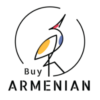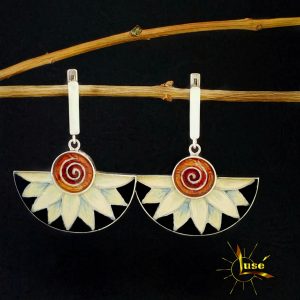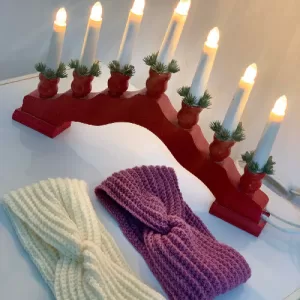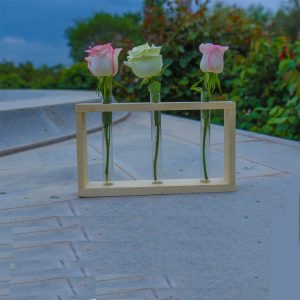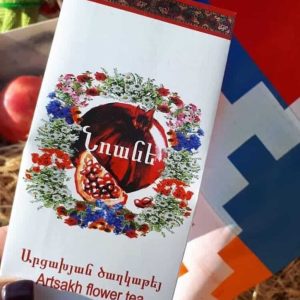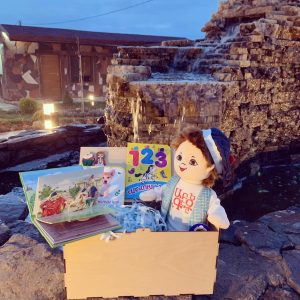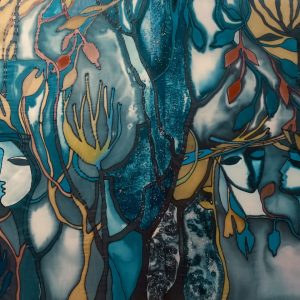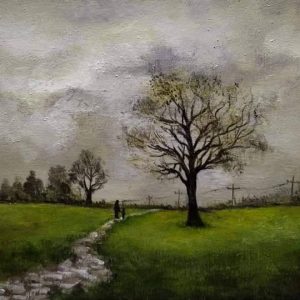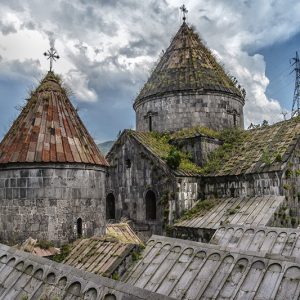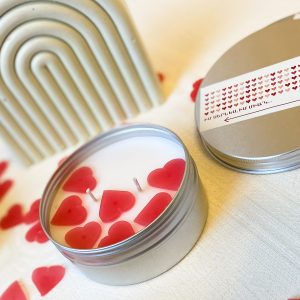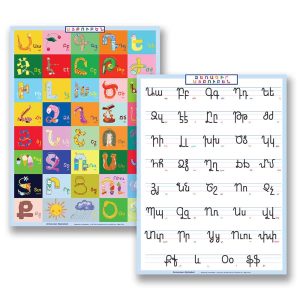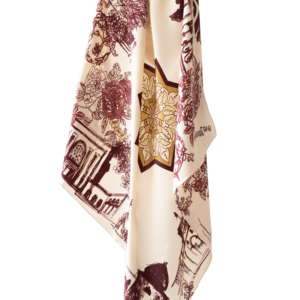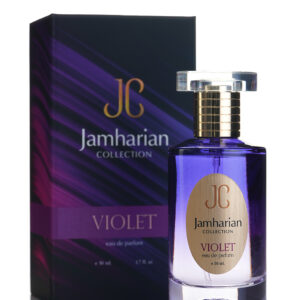-
“Daisies” Silver Earrings
Earrings made of 925 sterling silver
The image was created using enamels of different colors
Weight- 15 gr
Length- 5 cmEvery single detail is handmade
Processing time- 1-10 business days$135.00“Daisies” Silver Earrings
$135.00 -
Pink Crochet Headband for Women
Size:
Designed for women of all ages.Dimensions:
Length: 54 cm
Width: 10 cm$10.00$15.00Pink Crochet Headband for Women
$10.00$15.00 -
Wooden Vase
The vase is all wooden. It has natural wooden color and does not come with a flower. It is processed and lacquered wooden vase and comes with 3+1 glass flask.
Size
15cm Height , 27cm length , 0.260 kg
$25.00Wooden Vase
$25.00 -
Artsakh Flower Tea
ARTSAKH FLOWER TEA “Nrane” flower tea has antioxidant and antiviral properties. It is slightly bitter and has a pleasant colour.
Ingredients: Punica, Ocimum, Cephalaria, Chamanearion, Rubus. Steep tea for 5-7 minutes.
Not suitable for pregnant women and children under 1 years old.
Net weight: 35 grams.
$4.70Artsakh Flower Tea
$4.70 -
Gift Box For Kids
1. toy who speaks Armenian
2. colored book which teaches Armenian numbers
3. soft textured book which teaches colors and animals
4. interactive fairy tales$69.99$79.99Gift Box For Kids
$69.99$79.99 -
-
Roofs of Sanahin. Photo print.
Roofs of Sanahin monastery. Photo print on canvas or photopaper.
$30.00 – $200.00Roofs of Sanahin. Photo print.
$30.00 – $200.00 -
“I Love You” Candle
The candle is scented , made of high quality paraffin.
The price is only for one candle.
$10.00“I Love You” Candle
$10.00 -
“Armenian Alphabet” Poster Set
Armenian Alphabet Kids Educational Poster – 2pack set (Pictorial Poster & Manuscript Writing Poster)
$20.00 -
“Yerevan Love” Scarf
Inspired by the city of Yerevan and the love each and every Armenian feels for the city.
The history of Yerevan dates back to the 8th century BCE, with the founding of the fortress of Erebuni in 782 BCE by King Argishti I at the western extreme of the Ararat plain. Erebuni was “designed as a great administrative and religious centre, a fully royal capital.” By the late ancient Armenian Kingdom, new capital cities were established and Yerevan declined in importance. Under Iranian and Russian rule, it was the center of the Erivan Khanate from 1736 to 1828 and the Erivan Governorate from 1850 to 1917, respectively. After World War I, Yerevan became the capital of the First Republic of Armenia as thousands of survivors of the Armenian genocide in the Ottoman Empire arrived in the area. The city expanded rapidly during the 20th century as Armenia became part of the Soviet Union. In a few decades, Yerevan was transformed from a provincial town within the Russian Empire to Armenia’s principal cultural, artistic, and industrial center, as well as becoming the seat of national government.
With the growth of the Armenian economy, Yerevan has undergone major transformation. Much construction has been done throughout the city since the early 2000s, and retail outlets such as restaurants, shops, and street cafés, which were rare during Soviet times, have multiplied. As of 2011, the population of Yerevan was 1,060,138, just over 35% of Armenia’s total population. According to the official estimate of 2016, the current population of the city is 1,073,700. Yerevan was named the 2012 World Book Capital by UNESCO.[28] Yerevan is an associate member of Eurocities.$110.00
